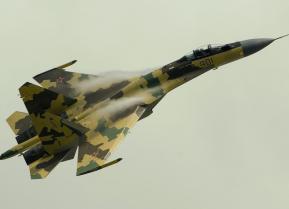Can China Rise Peacefully?
If the China continues growing rapidly, the US will once again face a potential peer competitor, and great-power politics will return in full force.
The final reason for doubting this theory of peace is that economically interdependent countries can sometimes fight wars and still avoid incurring significant economic costs. To begin with, a country can take aim at a single rival, devise a clever military strategy, and win a quick and decisive victory. In fact, most states go to war thinking they will achieve a swift triumph, although it does not always work out that way. When it does, however, the economic costs are not likely to be significant, since the fight is with a single rival and success comes quickly.
The economic costs of war are usually greatest when states get involved in protracted wars with multiple countries, as happened in the two world wars. But leaders do not take their country to war expecting that outcome; indeed, they expect to avoid it. Furthermore, as discussed earlier, nuclear weapons make it extremely unlikely that China will end up fighting a major conventional conflict resembling World War II. In fact, any wars that break out in Asia are likely to be limited in terms of both goals and means. In such circumstances, the economic costs of fighting are likely to be limited and thus do not pose a significant threat to the prosperity of the belligerents. Winning a small-scale war might indeed add to a country’s prosperity, as might happen if China seized control of the South China Sea.
Furthermore, there is abundant evidence that states at war with each other often do not break off economic relations. In other words, states trade with the enemy in wartime, mainly because each side believes it benefits from the intercourse. Jack Levy and Katherine Barbieri, two of the leading experts on this subject, write, “It is clear that trading with the enemy occurs frequently enough to contradict the conventional wisdom that war will systematically and significantly disrupt trade between adversaries.” They add that “trading with the enemy occurs during all-out wars fought for national independence or global dominance as well as during more limited military encounters.” In short, it is possible for a country to fight a war against a rival with which it is economically interdependent, and not threaten its own prosperity.
All of these reasons make it hard to be confident that economic interdependence can serve as a firm foundation for peace in Asia in the decades ahead. This is not to deny, however, that it might serve as a brake on war in certain circumstances.
CONCLUSION
The picture I have painted of what is likely to happen if China continues to rise is not a pretty one. Indeed, it is downright depressing. I wish I could tell a more hopeful story about the prospects for peace in Asia. But the fact is that international politics is a dangerous business, and no amount of goodwill can ameliorate the intense security competition that sets in when an aspiring hegemon comes on the scene in either Europe or Asia. And there is good reason to think China will eventually pursue regional hegemony.
It is worth noting, however, that although social science theories are essential for helping us make sense of the remarkably complicated world around us, they are still rather crude instruments. The ability of even our best theories to explain the past and predict the future is limited. This means every theory confronts cases that contradict its main predictions. Given the grim picture I paint, let us hope that if China becomes especially powerful, the actual results of that development will contradict my theory and prove my predictions wrong.
John J. Mearsheimer is the R. Wendell Harrison Distinguished Service Professor of Political Science at the University of Chicago. He is on the advisory council of The National Interest.
“Excerpted from The Tragedy of Great Power Politics by John J. Mearsheimer. Copyright © 2014 by John J. Mearsheimer. With permission of the publisher, W. W. Norton & Company, Inc.”
Images: U.S. Department of Defense, U.S. Navy and White House Flickr.
This was first posted April 8, 2014. It is being reposted due to reader interest.


